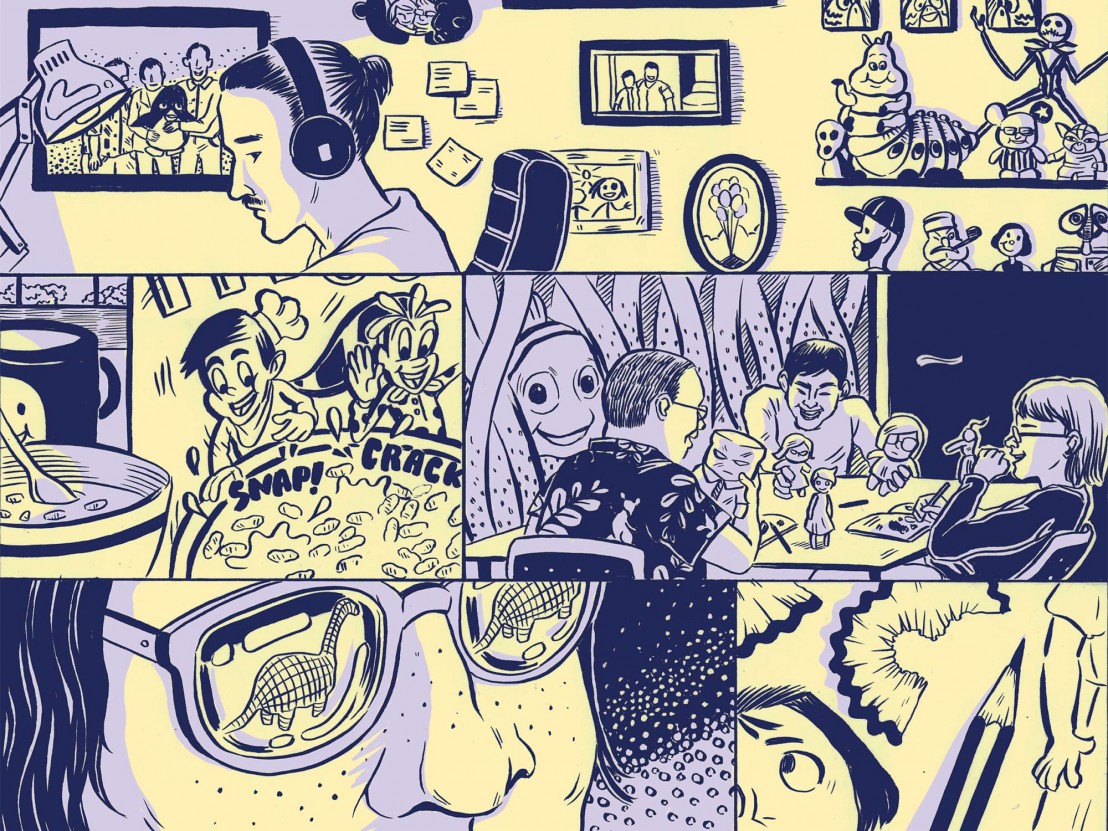
LWLies reports from the beguiling Bay Area basecamp of one of the world titans of feature animation.
Unless the name on your business card reads ‘Commander Chris Hadfield,’ chances are your office isn’t half as cool as that of the 1,200 or so employees at Pixar Animation Studios. Nestled among the workshops and warehouses that make up the industrial sector of Emeryville, California, the birthplace of Woody, Buzz and co is a leafy, state-of-the-art campus that features an outdoor swimming pool, basketball court, on-site gym facilities and a free all-you-can-eat cereal bar. A 22-acre plot of prime commercial real estate that was once the site of the Del Monte fruit canning factory, nowadays 1200 Park Avenue is famous for producing something even sweeter. Yet while it’s easy to be seduced by the sights and smells that greet you upon entering the grounds of this pristine dream factory – the unconditionally friendly staff, the freshly cut grass – scratch the surface and you begin to notice a different aspect of life inside Pixar.
“It’s not all flowers and sweet smells here – people worry about stuff sometimes,” Pixar mainstay Pete Docter tells LWLies. “We’ve only ever had one serious round of layoffs, but we’ve had enough success over the years to propel us in the right direction.” Those cuts, which coincided with the announcement in September 2013 that The Good Dinosaur was being pushed back 18 months following the removal of director Bob Peterson from the project, affected five per cent of Pixar’s workforce and served as a stark reminder to everyone within the company of the fiscal pressure that comes with running a film studio. Docter is quick to stress that he and his fellow employees are largely shielded from everyday commercial concerns, but point outs that preserving a healthy creative culture at Pixar is only possible because of the tireless efforts of its Hawaiian shirt-collecting CCO, John Lasseter. “His work ethic is unlike anyone I’ve ever met. Honestly, I don’t know how he does it. John lives the life of 12 ordinary people all at once and yet still is the first one to wake in the morning and the first one to take on new challenges. He just has an intuitive sense of what’s going to work for the business.”
Along with Lasseter, Andrew Stanton and the late Joe Ranft, Docter is a founding member of the ‘Brain Trust’, a now-extended yet relatively small group of thought leaders who oversee development on all Pixar projects. Having joined Pixar as a wide-eyed college graduate in 1990, becoming only its tenth employee and third resident animator, Docter has gone on to direct three of the studio’s 15 completed feature films to date: 2001’s Monsters, Inc, 2009’s Up and this year’s Inside Out. During his time at the company, Docter has seen it grow from a plucky startup operating out of a modest rental space in Marin County just north of San Francisco – back when Pixar was still in its first major transitional phase following its breakaway from Lucasfilm – into one of the world’s most cherished (not to mention lucrative) film studios.
Perhaps the most significant change occurred in 2006 when Pixar’s then CEO, Steve Jobs, negotiated a deal that saw The Walt Disney Company purchase Pixar for a cool $7.4 billion. Docter recalls being in a fairly relaxed mood when the news broke: “I was actually at Disneyland onboard the Riverboat when I got a call from [president of Pixar and Walt Disney Animation Studios] Ed Catmull,” he says. “This was before they announced it to the company, so it came as something of a shock.” Was he at all nervous about how Pixar’s future might be affected? “A little, sure. But when Steve sold the company he wrote into the contract that there were certain things which Disney was not allowed to mess with. And really, when you think about it, gee, they spent $7 billion, so they’re not going to come in and change everything overnight. But fortunately they weren’t interested in disrupting what we were doing. They just wanted a piece of what we had.”
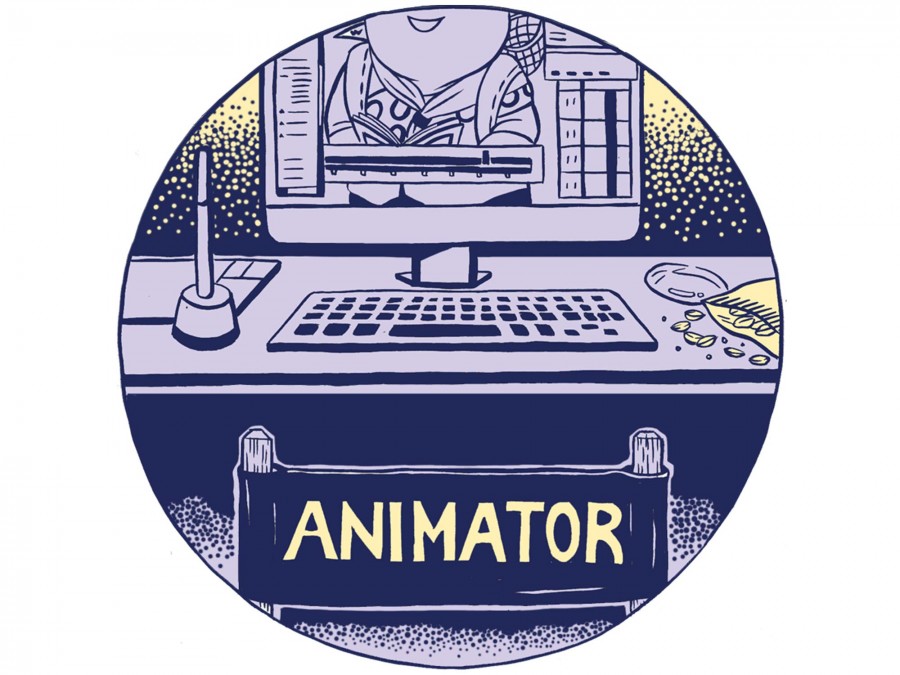
It’s fascinating to chart the respective trajectories of these sister animation studios since that historic acquisition. Where Disney has undergone something of a mini renaissance following the global successes of Tangled, Wreck-It Ralph, Frozen and Big Hero 6, Pixar has to some extent struggled to live up to its own impossibly high standards, producing numerous sequels that failed to connect with audiences on the same level as earlier hits like Finding Nemo and Wall-E. Other studios have upped their game, too. While DreamWorks has been busy winning auds’ hearts and minds with the How to Train Your Dragon films, Universal saw 2013’s Despicable Me 2 outperform Pixar’s Monsters University at the domestic box office to the tune of $100 million – this despite the former being made for just $76 million (compared with MU’s $200 million) and within a more economic timeframe.
With the competition fiercer than ever before, another studio might be tempted to increase its output in a bid to put some distance between itself and the chasing pack. Not Pixar. “A Pixar movie takes about four to five years to make,” explains Up and Inside Out producer Jonas Rivera, who’s been with the studio since 1994. “We’ve reached a point now with the technology where it’s hard to see how things are ever going to get faster in terms of the animation. But our goal isn’t necessarily to make movies faster. I would like to, because that means we’d be able to tell more stories, but it’s important that we continue to do things our own way.”
Rivera is a cool customer with an infectious enthusiasm for his work. If he does ever feel the heat, he certainly doesn’t show it. However, as a producer, he acknowledges that the weight of responsibility rests partly on his shoulders. “My whole job is to get the film out to an audience, but when you reach that point there’s a certain reluctance that kicks in. You put everything you’ve got into something for so long and you want people to like it, but it’s never a done thing.” He continues, before dispelling the notion of any rivalry between Pixar and Disney. “Down here in the trenches of making the films there’s no bad blood between us and them. At the end of the day it’s just business. We want Pixar to do well, we want Disney to do well. In fact, I’m friends with a lot of the animators over there, we even share notes from time to time. It’s the same with DreamWorks – director to director, producer to producer, animator to animator, it’s a pretty supportive network. Of course, it helps that I admire so much of the work these guys are doing. Even in my house, I’ll say to my kids, ‘Do you guys wanna watch Ratatouille?’ and they’ll say, ‘No, we wanna watch The Lego Movie’.”
Perhaps the most noticeable common trait among Pixar employees is an appreciation for all types of animation, not just the computer-generated kind. “I love traditional hand-drawn animation,” Rivera says, “one of my favourite animators right now is Tomm Moore. Another is David O’Reilly, he makes some of the craziest stuff I’ve ever seen but I find it really beautiful. Ultimately, I want to make movies that people grow up with, just in the same way that I grew up with Peter Pan. When you spend a big chunk of your life on something you want that to have an impact on people, to be an important part of their life, their children’s lives. My two kids used to really love Miffy the Bunny – they’re nine and six now, so they don’t watch Miffy so much these days. But it’s funny because we were cleaning out some of the kids’ old toys recently and when I went to throw out the Miffy the Bunny house they said, ‘No, no, no, no! Dad, that’s Miffy the Bunny’s house, we want it!’ That’s so cool, you know, it’s already a part of their childhood and it really means something to them. It’s corny, but that’s what I want from the movies we make. I want a kid to not want to give up their Inside Out DVD or toy.”
“We don’t see animation as a genre. I hope there comes a time when people see it as we see it, which is just as movies.”
With three feature films scheduled for release in the next 12 months – Inside Out, The Good Dinosaur and Finding Dory – and Toy Story 4 also in development, Pixar looks well placed to build on its extraordinary legacy. But when LWLies enquires as to where the future of animated storytelling lies, the conversation gets even more self-analytical. As Docter reflects: “On the first Toy Story, we settled on that particular subject matter because, whether we liked it or not, everything looked like plastic. So we decided it was best to just embrace that. Since then we’ve been able to do fur and organic cloth, and on Inside Out we’ve been able to create characters who are a lot more fluid and loose, almost like they’re hand-drawn. But in terms of the actual stories we’ve told, sometimes I feel like we’re stuck a little bit in our own format. We make the films that we ourselves would want to see, but that’s according to the same group of people who’ve been here now for 20 odd years. So I’m not sure that we’ve really pushed animation as far as we could or maybe should have, but I hope that we’ll continue to challenge people’s perceptions of what a Pixar film is.”
“I think about One Hundred and One Dalmatians a lot,” adds Rivera. “If you watch the four Disney movies leading up to that – Alice in Wonderland, Peter Pan, Lady and the Tramp and Sleeping Beauty – it sticks out like a sore thumb. It doesn’t feel like a Disney movie – there’s voice over, the music’s different, it looks different. I can’t lie, I do crave something like that for us. We had that when Brad Bird was brought in on The Incredibles. I remember early on sitting watching the story reels for the first time, someone mentioned Pulp Fiction, something about how it’s a movie made up of shots that would normally be cut out of the movie. That’s kind of how The Incredibles felt. We’re constantly looking to rekindle that, while still making family entertainment that’s on-brand.” Amid all this introspection, Rivera admits that there’s an even greater challenge facing Pixar, one which could be viewed as being beyond the reach of any one film studio. “We don’t see animation as a genre,” he says with just a hint of defiance. “I hope there comes a time when people see animation as we see it, which is just as movies. I remember being at the Cannes Film Festival in 2009 with Up, that felt like a watershed moment for us and animation in general. I was looking over my shoulder at the Pedro Almodóvars and Michael Hanekes and it felt crazy that we were there, but at the same time it also felt like we fully deserved to be there. World cinema accepted us to the table for a minute and we wanted another taste.”
Rivera and Docter got a second helping in May when Inside Out premiered in Cannes to widespread critical acclaim. Twenty years after Toy Story first introduced us to the awesome capabilities of computer animation, the studio’s latest crowning achievement literally takes audiences on a journey inside the human mind to reaffirm the power of imagination. It is Pixar’s most ambitious film to date and an emphatic response to those who voiced concerns about the studio’s direction following the slight dip in form that preceded Toy Story 3. But more than this, Inside Out proves that great art doesn’t exist in a vacuum. It is thanks in part to the resurgence of Disney, DreamWorks and the rest that Pixar continues to tell dazzling original stories on a spectacular scale while striving to push the boundaries of their preferred medium – what Brian Eno coined in 2009 as a ‘scenius’, whereby artistic trends emerge not through an individual’s contributions but through an ecology of talent. Pixar is no longer way out on its own, and that’s a good thing. Because the thriving cultural scene to which the studio belongs may one day engender the permanent shift in public consciousness it so desperately craves.
Published 10 Jul 2015
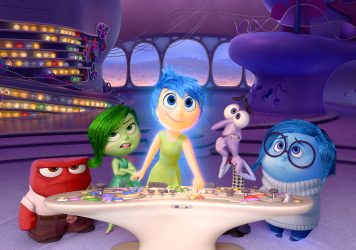
Pixar are firing on all pistons with this wonderful, colour-coded exploration of a child’s inner psyche.
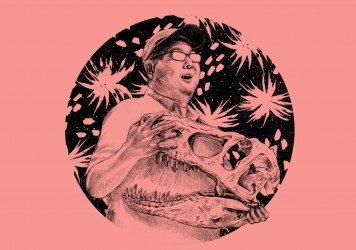
A Pixar debut boy talks about plucking up the courage to direct The Good Dinosaur.
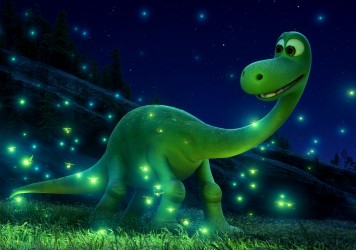
This prehistoric psychedelic western is Pixar’s strangest and most spectacular work to date.